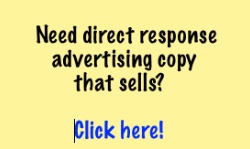Anybody who has anything to do with sales and marketing should read the classic book “The Great Brain Robbery” by Ray Considine and Murray Raphel.
It’s a great book that fully delivers on the promise in the subtitle: “A collection of proven ideas to make you money and change your life.”
One of my favorite chapters in the book outlines a terrific system for generating tons of business without spending a fortune on advertising and marketing, and without leaping through any complicated hoops.
Their system — called the “Four-mula for Success” — is so simple, anyone can do it, yet surprisingly few people make the effort. Yet I agree with the authors when they call it an “easy-to-follow guaranteed way of increasing business.”
And the really nice thing is, it takes less than half an hour each day.
The Four-mula involves making four contacts with your past customers every day (and you might as well include prospects for good measure).
And you have four ways to do it: 1) Write a thank you note; 2) Make a phone call; 3) Make a personal contact; and 4) Make a sale.
The idea is to choose any combination of the four that equals four contacts a day. Write four notes if you like. Or write two notes and make two phone calls. Or do one of each. Do whatever works for you, but whatever you do, make four contacts a day.
Let’s take a closer look…
1. Write a thank you note
Saying “thank you” seems to be a lost art. I don’t recall the last time I got a thank you note from someone I made a purchase from — including substantial purchases. Perhaps you’ve had the same experience.
Yet your customers will appreciate a thank you. It has real impact, it makes them feel important and they deserve it.
Best of all, it puts your name, your business and your products or services at the top of their mind for at least a moment or two.
By the way, don’t limit yourself to just saying “thank you.” It’s also a good idea to look for article or ideas that one or more of your customers might find of interest — and then send it to them with a brief note. It’s another good excuse for staying in touch.
Last point: use postal mail to send your thank you notes. It’s much more personal than e-mail — and your customer is practically guaranteed to open and read it.
2. Make a phone call
This is really no different than the thank you note. You’re
just doing it over the phone. Considine and Raphel even
provide a couple of simple scripts:
“Is this Mrs. Jones? Good morning. I’m calling to say thank you for doing business with us. We appreciate your business and want you to know if there is any other way we can help you in the future, I would appreciate your calling me.”
Or say, “I was going through my files, saw your name, and said to myself, it’s been too long since I called you, so I dialed your number. Are things going okay?”
If you wish, mention the new products you have in inventory… the upcoming sale… or the new store you’re opening. Give them a new opportunity to buy from you.
3. Make a personal contact
This involves telling four people what you do and giving them your card. Many businesses lose countless sales simply because people the owner or marketing manager come in contact with have no idea what he or she does.
Don’t let this happen to your business.
And when it comes to business cards, don’t settle for the usual, boring name, rank and serial number card. Make your card stand out. Put your photo on the card. Include an offer on the back — perhaps for a free report, a free daily email! or a free consultation.
4. Make a sale
Making the sale is really what it’s all about. So get out and sell yourself — and your products and services.
Get started today…
There you have it — a simple four-step plan for getting more business and for building a terrific network of contacts and resources.
No fancy sales funnels. No complicated software. No learning curve. Just some old fashioned salesmanship.
Do it every business day and you’ll make an extra 1,000 contacts every year. And that can’t help but be good for your business.

